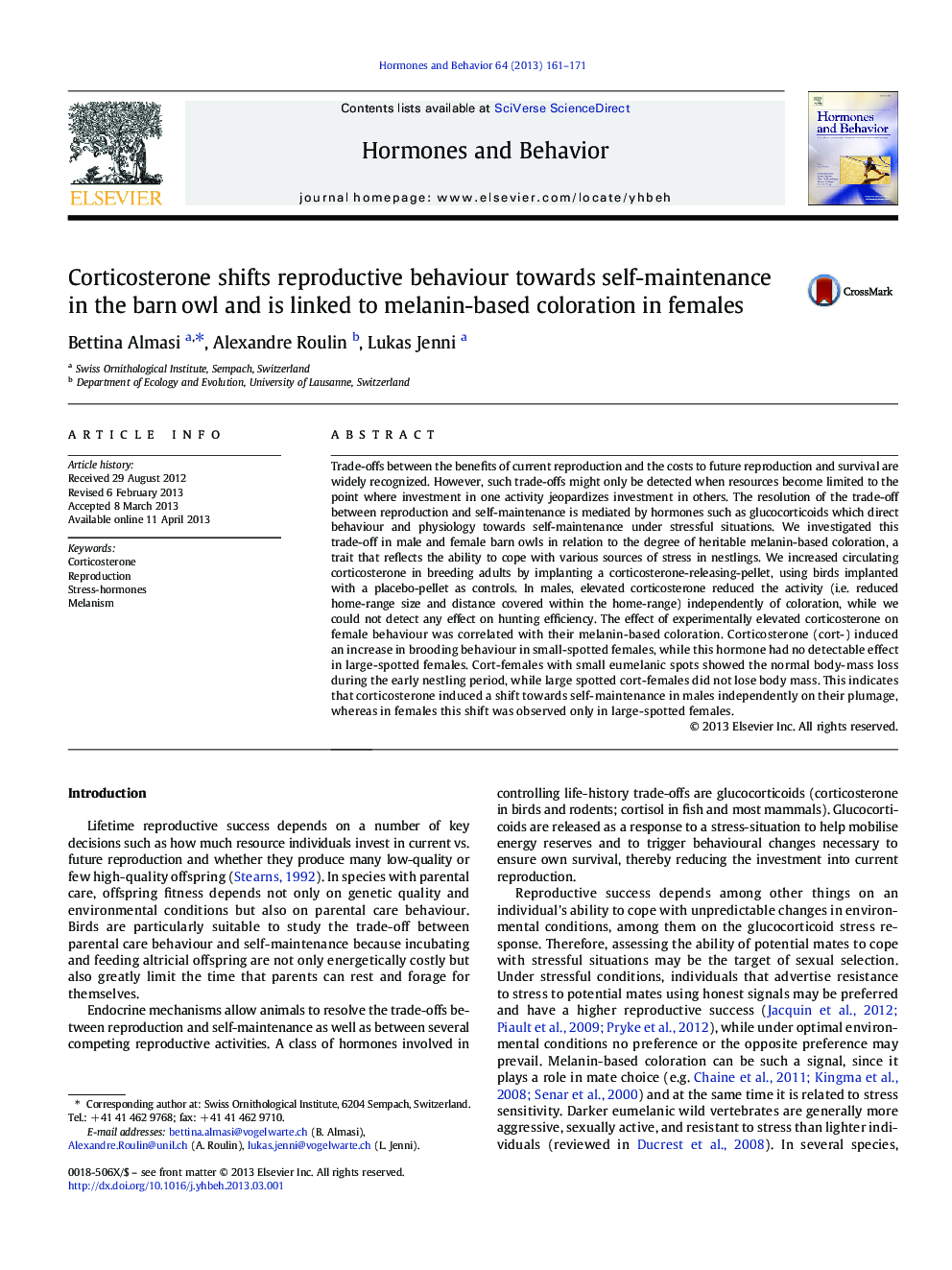| Article ID | Journal | Published Year | Pages | File Type |
|---|---|---|---|---|
| 323623 | Hormones and Behavior | 2013 | 11 Pages |
•We investigated the effect of elevated corticosterone on reproduction in barn owls.•Exogenous corticosterone shifted male behaviour from reproduction to self-maintenance.•With exogenous corticosterone only large spotted females shifted to self-maintenance.•Corticosterone reduced female brooding behaviour in small-spotted individuals only.•Large spotted cort-females did not lose body mass as did small spotted cort-females.
Trade-offs between the benefits of current reproduction and the costs to future reproduction and survival are widely recognized. However, such trade-offs might only be detected when resources become limited to the point where investment in one activity jeopardizes investment in others. The resolution of the trade-off between reproduction and self-maintenance is mediated by hormones such as glucocorticoids which direct behaviour and physiology towards self-maintenance under stressful situations. We investigated this trade-off in male and female barn owls in relation to the degree of heritable melanin-based coloration, a trait that reflects the ability to cope with various sources of stress in nestlings. We increased circulating corticosterone in breeding adults by implanting a corticosterone-releasing-pellet, using birds implanted with a placebo-pellet as controls. In males, elevated corticosterone reduced the activity (i.e. reduced home-range size and distance covered within the home-range) independently of coloration, while we could not detect any effect on hunting efficiency. The effect of experimentally elevated corticosterone on female behaviour was correlated with their melanin-based coloration. Corticosterone (cort-) induced an increase in brooding behaviour in small-spotted females, while this hormone had no detectable effect in large-spotted females. Cort-females with small eumelanic spots showed the normal body-mass loss during the early nestling period, while large spotted cort-females did not lose body mass. This indicates that corticosterone induced a shift towards self-maintenance in males independently on their plumage, whereas in females this shift was observed only in large-spotted females.
